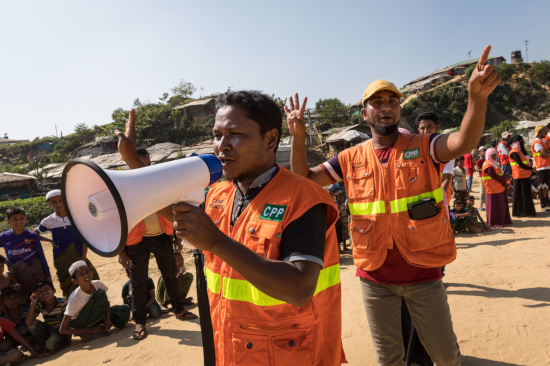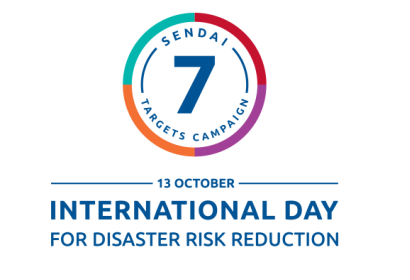Today, 13 October, is the International Day for Disaster Risk Reduction!
The United Nations General Assembly has designated 13 October as the International Day for Disaster Risk Reduction (IDDRR) to promote a global culture of disaster risk reduction. The 2022 edition takes place during the Mid-term Review of the Sendai Framework, which will conclude at a High-level Meeting of the General Assembly in May 2023 with a political declaration.
It is an opportunity to acknowledge the progress being made toward preventing and reducing disaster risk and losses in lives, livelihoods, economies and basic infrastructure in line with the Sendai Framework for Disaster Risk Reduction 2015-2030, adopted in March 2015.
Theme of the day: Early warning
In 2022, the International Day will focus on Target G of the Sendai Framework: “Substantially increase the availability of and access to multi-hazard early warning systems and disaster risk information and assessments to people by 2030.” The urgency to achieve this target was strengthened in March 2022 by the announcement made by the UN Secretary-General António Guterres that “the United Nations will spearhead new action to ensure every person on Earth is protected by early warning systems within five years.”
The primary goal of the Sendai Framework is to avoid creating new and reduce existing risk. But when that is not possible, people-centered early warning systems and preparedness can enable early action to minimize the harm to people, assets and livelihoods.

Key messages
To raise awareness and mobilize action around the urgency to achieve Target G, the United Nations Office for Disaster Risk Reduction (UNDRR) is using the 2022 the International Day for Disaster Risk Reduction, to call for greater investment in expanding early warning and early action for all.
Values of early warning:
- Early warning saves lives.
- Early warning by 24 hours can cut the ensuing damage by 30 per cent.
- Climate change is causing more frequent, extreme, and unpredictable climate-related hazards, making investment in early warning more urgent than ever.
- Early warning systems must cover multiple hazards. Cyclones, storms, floods and tsunamis, but also to warn against heatwaves, wildfires, droughts, sandstorms, volcanic eruptions, earthquakes, disease outbreaks, technological accidents, pest infestations and many other hazards.
Investment:
- Early warning systems must be multi-hazard, end-to-end and people-centered
- One-third of the world’s people, mainly in the least developed countries and small island developing states, are still not covered by early warning systems. In Africa, 60% of people lack coverage. This is unacceptable.
- We must enhance international support to Least Developed Countries (LDCs) and Small Island Developing States (SIDS) so that they can build and expand their early warning systems.
- Investing US$ 800 million in early warning systems in developing countries would avoid losses of $3-16 billion per year.
Leaving no one behind:
- If we are sincere about ‘leaving no one behind’ then we must close the ‘last mile’ in early warning systems
- At-risk communities must be made aware of the true risks they face, how their early warning system functions, and be ready to act on its warnings.
- We must customize early warning systems for different groups to meet their specific needs.
- To reduce harm and speed up recovery, early warning systems should trigger anticipatory actions, such as the expansion of social safety nets.
- Countries must engage, listen to and empower groups with special needs. Countries must ensure that all vulnerable people including older persons and persons with disabilities are not left behind when warnings are issued.
| Attachment | Size |
|---|---|
| iddrr_bangladesh_final-192.jpg_0.jpg (116.46 KB) | 116.46 KB |

